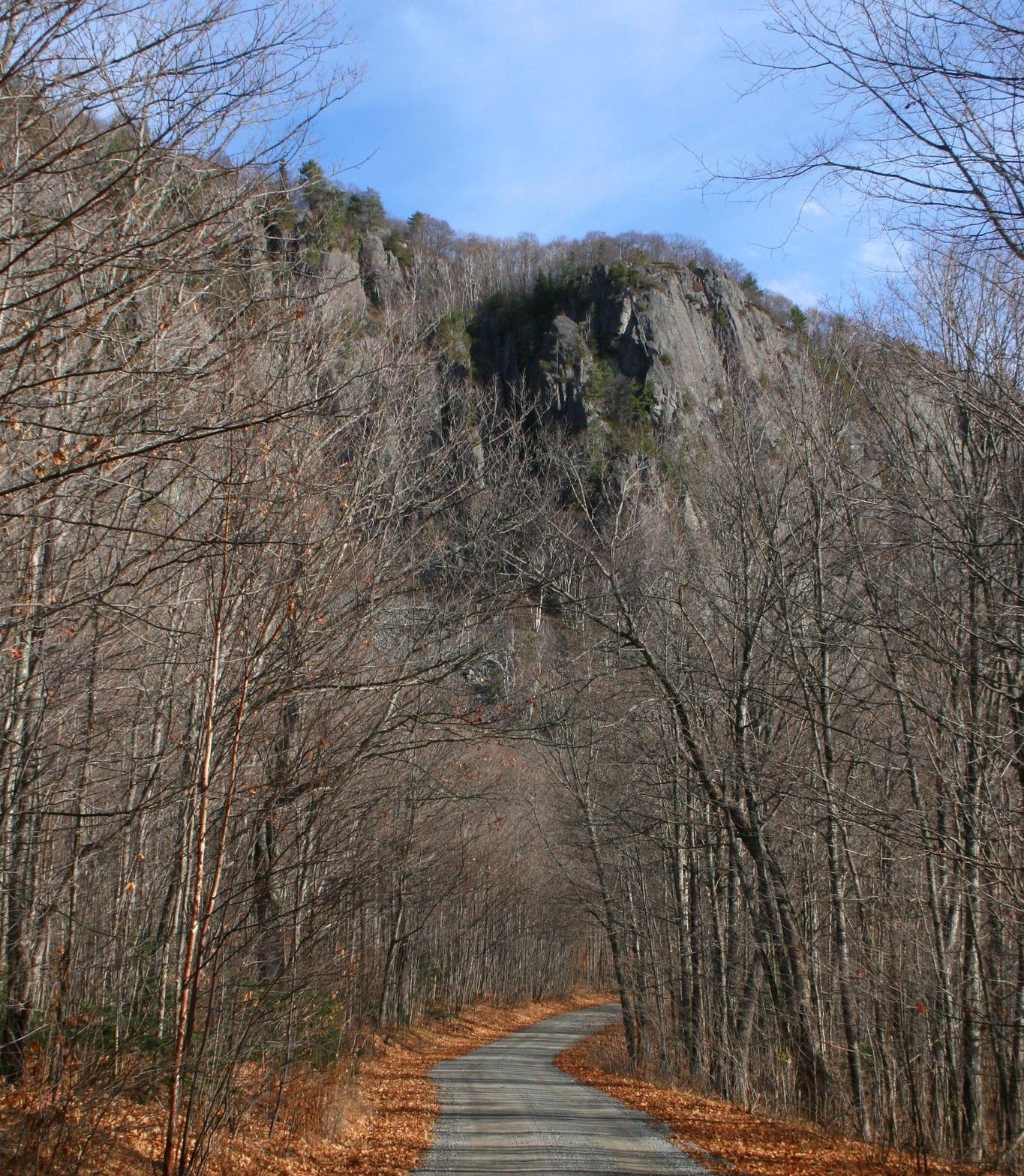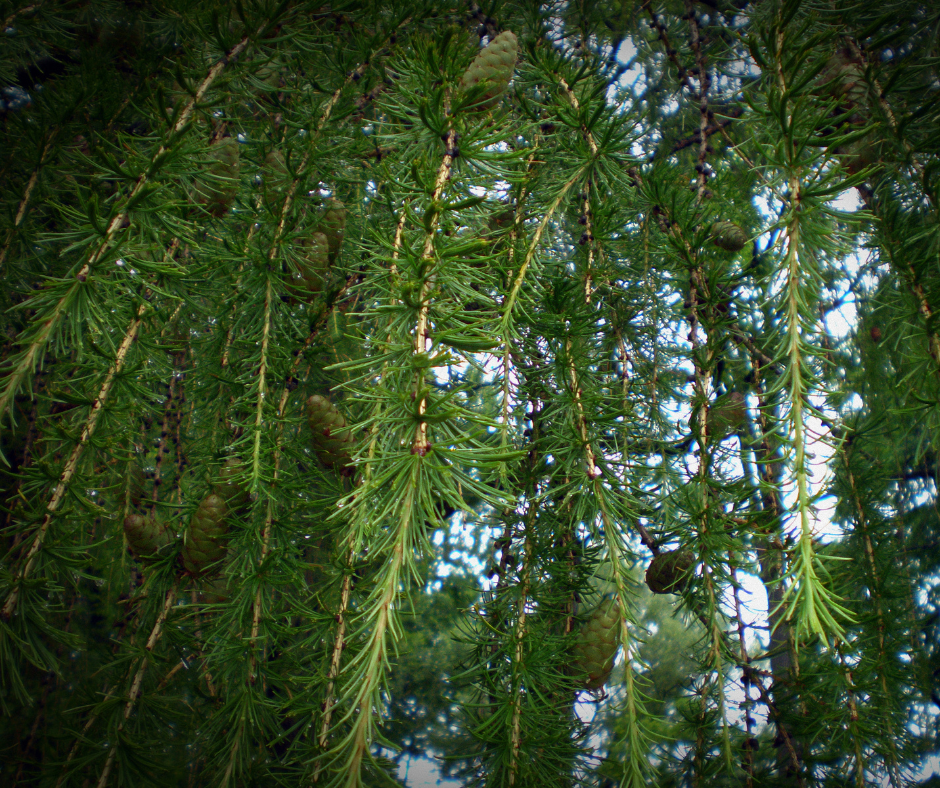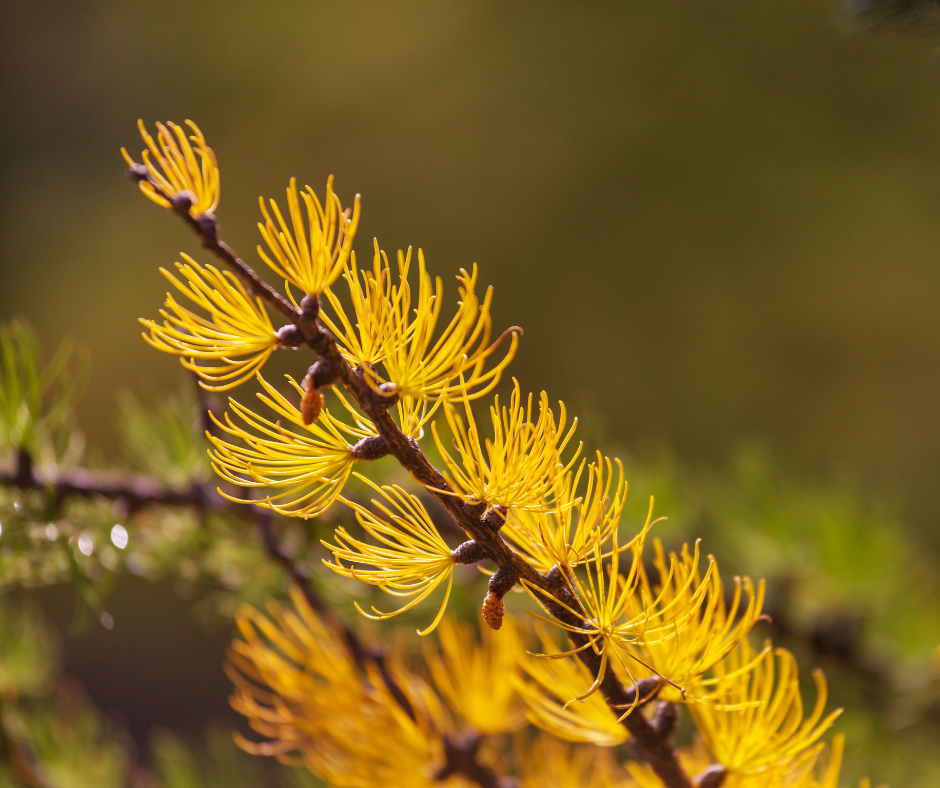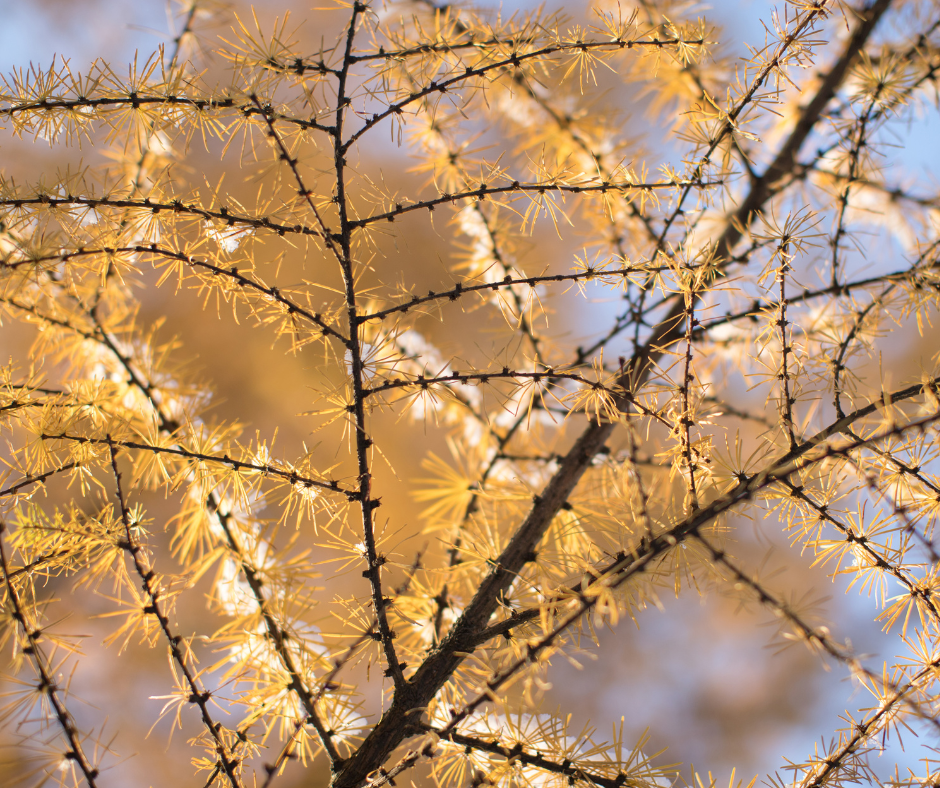Environmental Education
Autumn Trees: Chemistry and Nature
As autumn approaches, the green canopies of deciduous trees transform into a spectacular display of reds, yellows, and oranges. This annual spectacle is not just a treat for the eyes but also a remarkable example of nature’s complex chemistry at work.
To fully appreciate why some trees change color (and lose their leaves or needles!) while others don’t, it’s important to understand the differences between broadleaf, evergreen, deciduous, and coniferous trees.
Broadleaf and deciduous trees, such as the white birch (slide 1 & 2) lose their leaves at the end of every autumn. The white pine (slide 3) is considered to be both an evergreen and coniferous tree. Note that the two are not mutually exclusive.
- Broadleaf Trees: These trees have wide, flat leaves and include species like oaks, maples, and birches. Broadleaf trees are often deciduous, meaning they lose their leaves in the fall. The leaves of these trees are more susceptible to damage from cold and snow, so shedding them helps the tree survive winter.
- Evergreen Trees: Evergreen trees retain their leaves or needles throughout the year. Most conifers fall into this category, although there are exceptions, like larches, which are deciduous conifers.
- Deciduous Trees:
These are trees that lose their leaves annually, usually in response to seasonal changes. Most broadleaf trees are deciduous, shedding their leaves in autumn to conserve water and energy during the winter months.
- Coniferous Trees: These are trees that produce cones and typically have needles instead of broad leaves. Common coniferous trees include pines, spruces, and firs. Most (but not all!) conifers are evergreen, meaning they keep their needles year-round.
Changing Colours - Deciduous Trees
Now that you've got the basics down, let's talk colour change. At the heart a trees colour transformation is a pigment known as chlorophyll, the substance responsible for the green color in leaves. Chlorophyll plays a critical role in photosynthesis, the process by which plants convert sunlight into energy. During the warm months, chlorophyll is continuously produced and broken down, maintaining the vibrant green of the leaves.
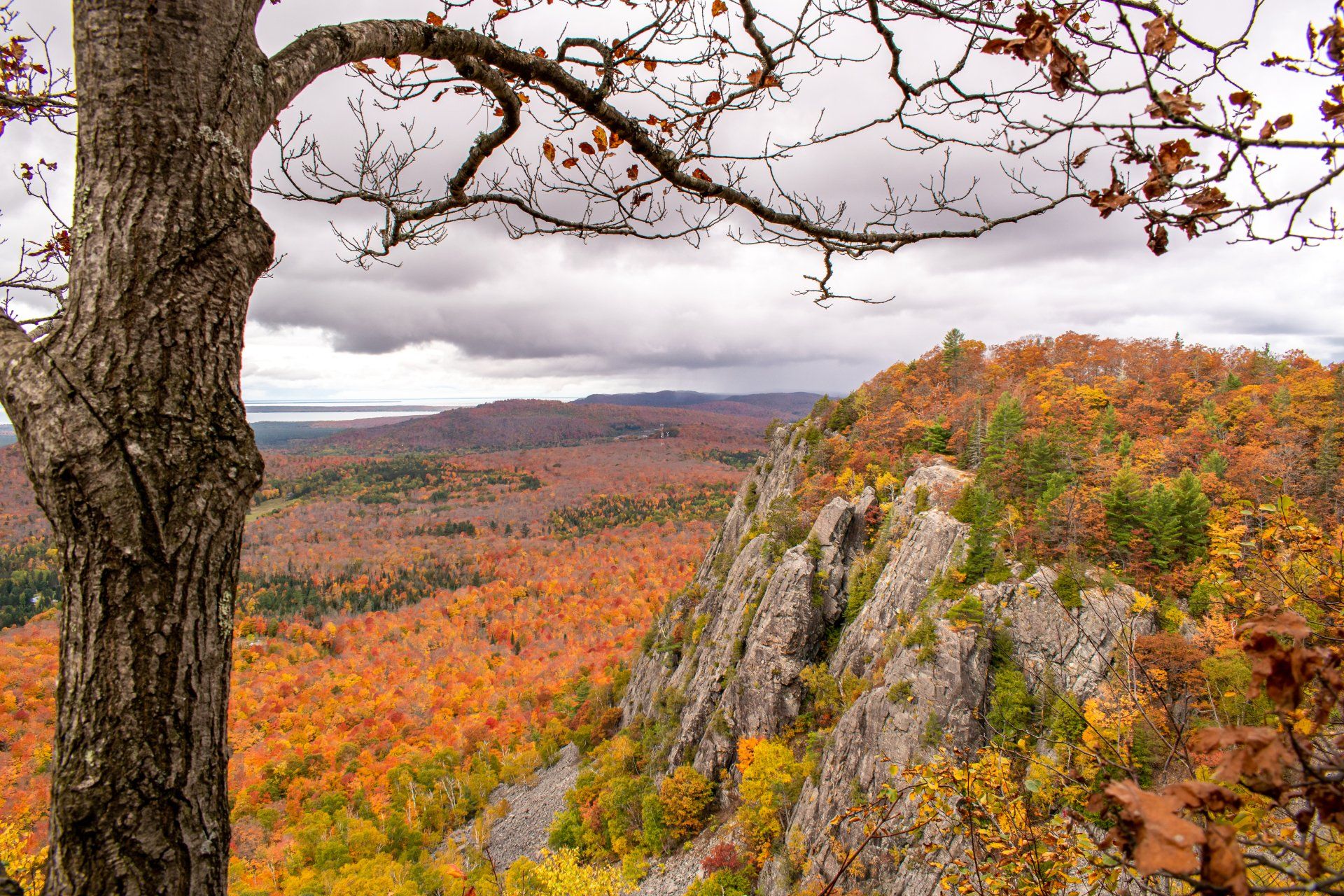
Both Robertson Cliffs and King Mountain offer stunning views during the height of autumn.
However, as the days grow shorter and the temperatures cool, the production of chlorophyll slows down and eventually stops. Without the constant supply of chlorophyll, the green fades, revealing pigments that have been there all along but were masked by the dominant green. These pigments, called carotenoids, give leaves their yellow and orange hues.
Fun Fact: Carotenoids don’t just bring color to autumn leaves—they’re also responsible for the vibrant reds, oranges, and yellows in some birds! Birds like cardinals and yellow warblers obtain carotenoids from their plant-based diets, and these pigments give them their brilliant plumage.
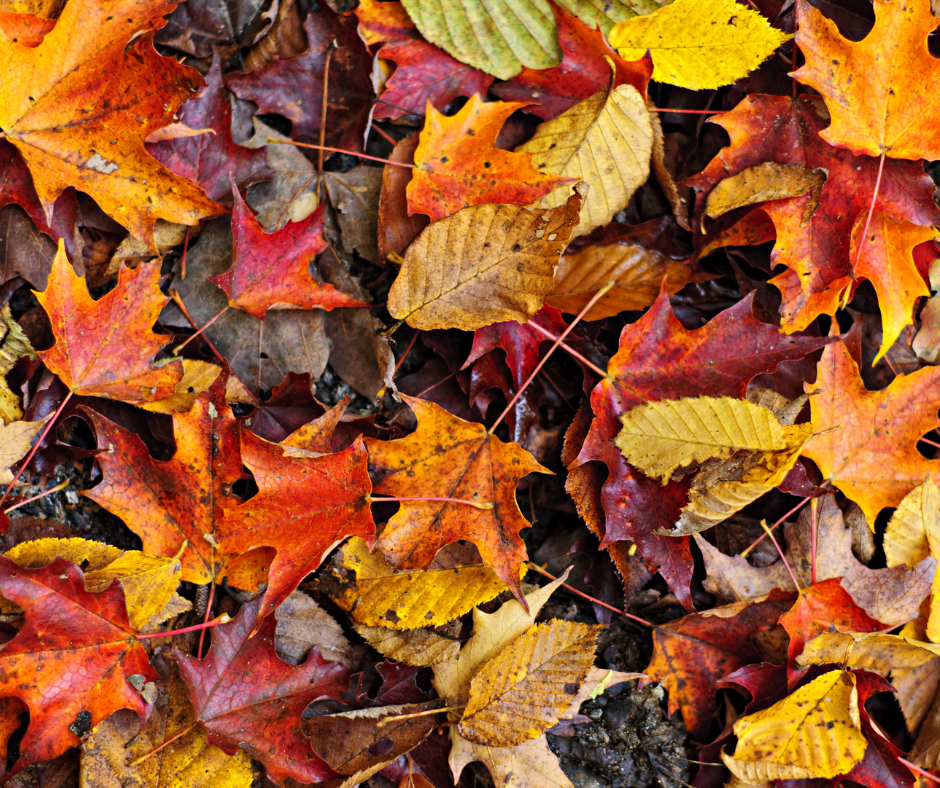
By the end of autumn, a sea of colors floods the ground.
But what about the stunning reds and purples that some leaves display? These colors are the result of another group of pigments called anthocyanins. Unlike carotenoids, anthocyanins are not present in the leaf throughout the growing season. Instead, they are produced in late summer in response to a combination of factors, including light, temperature, and the plant’s own chemistry.
As autumn progresses, the tree begins to seal off the connections between the leaves and the branches, creating a layer of cells at the base of each leaf stem. This process, known as abscission, cuts off the supply of water and nutrients to the leaf, leading to the final phase of color change before the leaf detaches and falls to the ground.
This process is essential for the tree as it prepares for winter. By shedding its leaves, the tree reduces water loss through transpiration and conserves energy, as maintaining leaves during harsh winter conditions would be a costly endeavor. In essence, the tree enters a dormant state, conserving its resources until the warmth and light of spring return.
Robertson Cliffs, looming over the deciduous broadleaf trees of Robertson Lake Road in late autumn. Photo by Dan Weemhoff
Eastern Larch: The Black Sheep
When it comes to conifers, not all is as it seems. While most conifers are evergreen and retain their needles year-round, a few species, such as the Eastern larch (also known as tamarack) are deciduous, and turn a vibrant yellow before shedding their needles in the fall. But why do larches lose their needles while other conifers do not?
You see, larches are not equipped with the same survival strategies as other conifers. For example, conifers such as pines, spruces, and firs, have evolved different strategies to retain their needles year-round. These evergreen conifers have small, narrow needles with a thick, waxy coating that reduces water loss and allows them to withstand freezing temperatures.
They also produce chemicals that act like antifreeze, preventing ice from forming within the cells of their needles. By keeping their needles, evergreen conifers can photosynthesize whenever conditions are favorable, even in winter, giving them a head start in the spring.
Instead of evolving the same evergreen survival strategies mentioned above, somewhere along the way, the larch decided that shedding needles would increase survival by:
- Conserving Water: In winter, water is less available, and the ground may be frozen. Shedding needles reduces water loss through transpiration, which is critical for survival in cold climates.
- Reducing Snow Load: Without needles, larches present less surface area for snow to accumulate. This reduces the risk of branches breaking under the weight of snow and ice, which can cause significant damage to the tree.
- Conserving Energy: Maintaining needles through the winter would require energy to keep them alive and functional. By dropping their needles, larches conserve energy and enter a dormant state until conditions improve in the spring.
Work smarter not harder, right? Well, really, who can say for sure. We're just glad the Eastern larch has it figured out!
The Eastern larch, a deciduous conifer, changes seasonally.
So there you have it, some seasonally appropriate #NatureNuggets to share with your friends on your fall visit to the Highlands! And don't forget... if the trees have developed their own way to cope with the challenges of winter, you can too!





